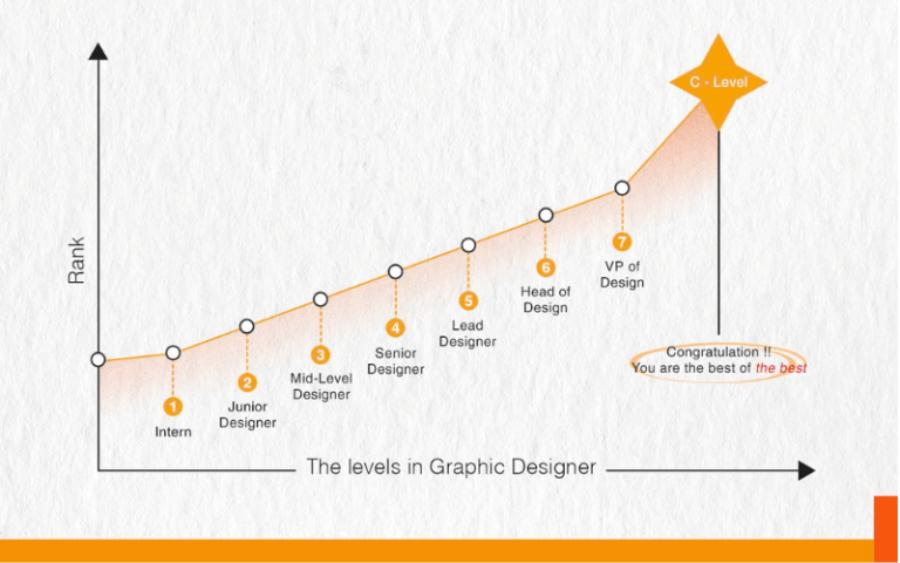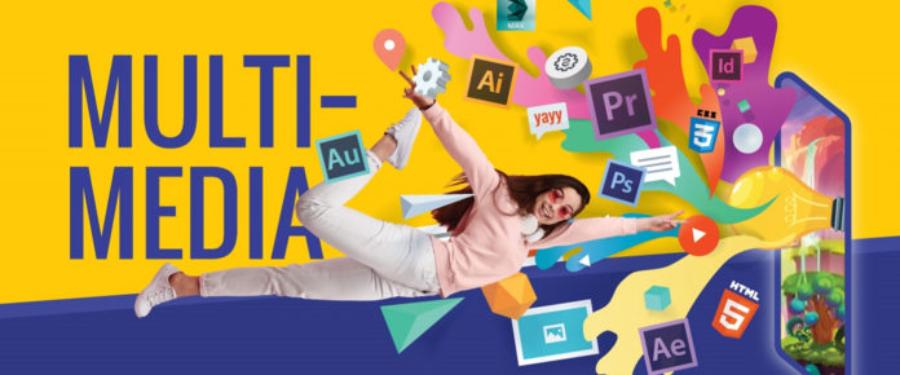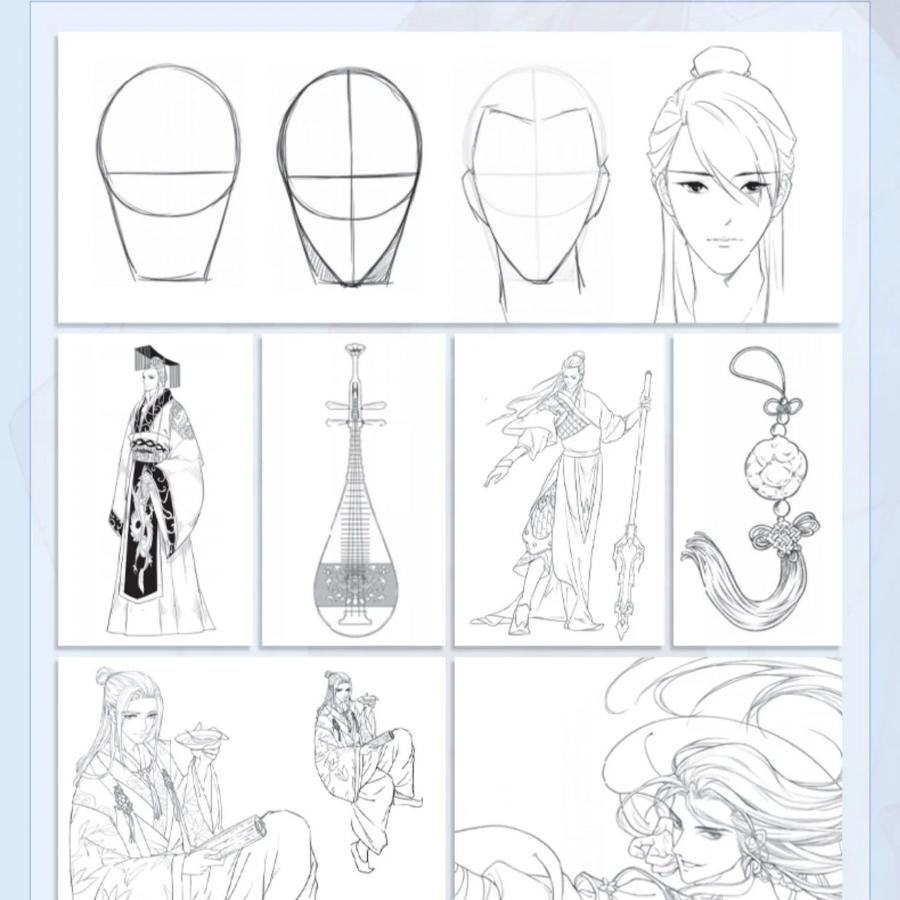Best Selling Products
Explore Career Paths in Multimedia Design
Nội dung
- 1. Overview of Multimedia Design industry and career opportunities
- 2. Career path for Multimedia Design students
- 2.1. Initial stage: Accumulating basic knowledge and skills
- 2.2. Intensive and advanced skill development stage
- 3. Career Journey in Multimedia Design
- 3.1. Multimedia designer position (Junior Designer)
- 3.2. Professional multimedia design position (Mid-level Designer)
- 3.3. Multimedia design specialist and project manager
- 4. Skills needed to advance in Multimedia Design
- 4.1. Technology and software skills
- 4.2. Creative skills and design thinking
- 4.3. Communication and teamwork skills
- 5. Steps to build a personal brand for students majoring in Multimedia Design
- 5.1. Create an impressive portfolio
- 5.2. Participate in real-world projects and industry communities
- 6. Challenges and how to overcome them in the promotion process
- 6.1. Dealing with work pressure and constant creativity
- 6.2. Update new knowledge and technology
- 7. Conclusion
Explore the career path of Multimedia Design students from beginner to leading industry professionals, expanding career opportunities and developing comprehensive skills

Multimedia Design is becoming increasingly important in today's digital age. Understanding the career path of Multimedia Design students not only helps young people orient their careers but also provides a basis for improving their own abilities in a systematic and professional manner. Through the article shared by Sadesign , everyone will have a comprehensive view of the career development journey in the field of multimedia design.
1. Overview of Multimedia Design industry and career opportunities
Multimedia Design focuses on creating media products that combine images, sounds, videos and animations to convey messages effectively and creatively. Students in this field not only master design skills but also grasp technology trends to apply in real-life work.
.jpg)
In the context of the rapidly developing digital economy, the career path for Multimedia Design students becomes clear and there are many opportunities for career development, from basic design staff positions to senior management and expert roles.
2. Career path for Multimedia Design students
2.1. Initial stage: Accumulating basic knowledge and skills
The career path of Multimedia Design students begins with the acquisition of basic professional knowledge. During this stage, students will become familiar with popular design software such as Adobe Photoshop, Illustrator, Premiere, After Effects, along with the basic principles of art, composition and color.
Continuous practice and participation in small projects help learners better understand the multimedia production process. The early stages are also the time to develop creative thinking and problem-solving skills, key elements in the Multimedia Design industry.
2.2. Intensive and advanced skill development stage
After having a solid foundation, students continue to develop more specialized skills in the field of Multimedia Design. This is the stage where the career path of Multimedia Design students requires focusing on advanced techniques, such as filmmaking skills, 2D/3D animation, UI/UX design, and interaction techniques.
Soft skills such as teamwork, time management, and effective communication are also enhanced to meet diverse job requirements in media businesses or technology companies.
3. Career Journey in Multimedia Design
3.1. Multimedia designer position (Junior Designer)
First steps into multimedia design
In the initial stages, the multimedia designer position serves as a foundation for the entire career. This is an important time to accumulate skills, build a personal style, and get acquainted with the professional working environment. Newcomers to the multimedia design industry often work under the guidance of experienced designers and are assigned to perform basic tasks such as image editing, banner design, short videos, motion graphics, or simple advertising publications.
.jpg)
Essential Skills for Multimedia Designers
To perform this role well, multimedia designers need to be proficient in design software such as Adobe Photoshop, Illustrator, After Effects, and Premiere Pro. In addition, communication skills, visual thinking, and the ability to quickly receive feedback are also key factors that help multimedia designers adapt and develop.
Challenges in the early stages
Many newcomers to multimedia design have difficulty adapting to the high intensity of work and the constant changes in client requirements. However, this is also an opportunity to practice the ability to withstand pressure and improve teamwork efficiency. With a spirit of learning and initiative, everyone can overcome this stage to go further in the field of multimedia design.
3.2. Professional multimedia design position (Mid-level Designer)
Accelerate with a bigger role
After about 2-4 years of experience, many people in the multimedia design industry have the opportunity to take on professional multimedia design positions. At this point, they no longer simply follow requests but begin to take on independent projects, participate in idea orientation and coordinate closely with other departments such as marketing, content production or brand communication.
Improve specialized skills
Intermediate level multimedia design requires a flair for visual and audio communication. In addition to technical skills, multimedia designers need to develop strategic thinking, understand market trends, and be able to turn abstract ideas into highly functional design products.
A mid-level designer in multimedia design typically oversees design quality, mentors new employees, and suggests creative solutions for each campaign. They also need to learn how to critique and defend their ideas to management or clients.
Build your personal design style
At this stage, defining your design style is very important. In a multimedia design environment, people with their own unique style will easily stand out, create a personal mark and be highly appreciated by employers. This is also the time when many designers begin to receive invitations to collaborate after hours or try their hand at freelance projects.
3.3. Multimedia design specialist and project manager
The pinnacle of multimedia design career
After years of training and experience, people working in multimedia design can become specialists or take on project management roles. This is the stage where they not only work on creative products but also manage teams, control progress, allocate budgets and ensure quality output.
Moving from technical to strategic
At this level, multimedia design is no longer a purely technical task but a highly strategic one. Multimedia designers are often involved in everything from ideation, planning, concept development to construction supervision and performance evaluation. They work directly with creative directors, clients and project stakeholders to ensure that the communication objectives are fully realized.
Develop leadership and project management skills
A multimedia designer needs leadership skills, the ability to make quick decisions, and flexibility in problem solving. In addition, they must also master project management tools such as Trello, Asana, Jira... to optimize the workflow.
This is also a time to build your personal brand and expand your network in the multimedia design industry. In this role, many people choose to set up their own studio or become design consultants for large businesses.
4. Skills needed to advance in Multimedia Design
.jpg)
4.1. Technology and software skills
The constant evolution of technology is changing the way the Multimedia Design industry operates. Therefore, one of the essential skills to advance in the Multimedia Design industry is the ability to master specialized technology tools and software.
Proficient in professional design software
The role of software such as Adobe Photoshop, Illustrator, After Effects, Premiere Pro or Blender in the creative process cannot be denied. Proficiency in these software not only helps improve work efficiency but also creates a clear competitive advantage. Each software serves a specific purpose: photo editing, graphic design, video editing, effects creation, 3D modeling, etc. The ability to flexibly and creatively use these tools is one of the necessary skills to advance in the Multimedia Design industry .
Update new technology trends
In addition to traditional software, trends such as UX/UI design, AI in design, virtual reality (VR) or augmented reality (AR) design are also gradually becoming basic requirements. Grasping and effectively applying these technologies helps you create breakthrough products. This is the reason why continuous learning and updating technology is also one of the necessary skills to advance in the Multimedia Design industry .
Basic programming knowledge
Even if you’re not a programmer, having knowledge of HTML, CSS, or JavaScript will help you communicate more effectively with the technical team, especially when working on web or app projects. This will improve your workflow and show you’re a versatile designer – the right skillset to advance in the Multimedia Design industry .
4.2. Creative skills and design thinking
A core element to develop in the field of design is creative thinking. Not only does it have to be beautiful, each product also needs to convey a message, brand and connect emotionally with the viewer.
Aesthetic thinking and artistic perception
Aesthetic thinking is not just about color coordination or typeface selection, but also the ability to see beauty and create products that evoke emotions. This thinking is one of the necessary skills to advance in the Multimedia Design industry , especially in the context of customers increasingly demanding unique and highly personalized products.
Problem solving through design
Every design is a visual solution to a specific problem. The practitioner must understand the target audience, user behavior, and communication goals to come up with the right solution. Design is not just creative, it is strategic. Problem-solving is a key element in the list of skills needed to advance in the Multimedia Design industry .
Ability to learn from feedback
No product is perfect the first time. Listening to and improving on feedback from customers, colleagues, or users is an important condition for rapid development. This is also one of the essential skills needed to advance in the Multimedia Design industry that is often underestimated but extremely essential.
4.3. Communication and teamwork skills
Design is no longer a solo job. Today, designers need to work with marketers, copywriters, programmers, project managers, etc. That makes communication skills an indispensable part.
.jpg)
Communicate ideas clearly
The ability to communicate design ideas to clients or stakeholders in a clear and understandable manner is a must. Not everyone understands art or design techniques, so presenting ideas visually and in a clear and understandable way helps you to be more persuasive and effective. This is why the necessary skills to advance in the Multimedia Design industry must include the ability to present clearly.
Effective teamwork
In the modern work environment, most design projects require teamwork. Working well with other members, listening, sharing responsibilities and working towards a common goal makes you a valuable asset. Effective collaboration skills are one of the essential skills for advancement in the Multimedia Design industry that businesses especially value.
Time management and work pressure
Design projects often have tight deadlines and require constant revisions. Knowing how to manage your time, prioritize your work, and stay calm under pressure will help you maintain quality work. It also helps demonstrate your professionalism — one of the essential skills to advance in the Multimedia Design industry .
5. Steps to build a personal brand for students majoring in Multimedia Design
5.1. Create an impressive portfolio
One of the factors that determines the career path of a Multimedia Design student is the portfolio. This is where the ability, design style and practical experience are most clearly demonstrated.
Portfolios should be updated regularly with new, diverse projects that reflect your progress.
5.2. Participate in real-world projects and industry communities
Participating in real-life projects helps Multimedia Design students improve their working skills and expand their relationships in the industry. Community activities, workshops and design competitions are also valuable opportunities to exchange and learn.
Thanks to that, the career advancement path of Multimedia Design students becomes more favorable, quickly achieving important career development steps.
6. Challenges and how to overcome them in the promotion process
6.1. Dealing with work pressure and constant creativity
Throughout the career path of a Multimedia Design student, the pressure to create new and relevant products is inevitable. Continuous creativity requires perseverance and a spirit of continuous learning.
Balancing work and leisure time, maintaining inspiration from the surrounding environment is an effective way to overcome this challenge.
6.2. Update new knowledge and technology
Multimedia Design industry is always changing rapidly according to technology and market trends. Slow knowledge update will slow down the advancement path of Multimedia Design students.
To avoid falling behind, you need to proactively learn, participate in specialized training courses and take advantage of diverse online resources.
7. Conclusion
The career path of a Multimedia Design student is a long journey and requires constant efforts in developing professional, creative, as well as managerial and communication skills. From the initial steps of accumulating basic knowledge to managerial and specialist roles, each stage contains many different opportunities and challenges.
With perseverance, a love of learning and passion, students majoring in Multimedia Design can absolutely go far in their career path, contributing to enriching the world of multimedia communications in today's digital age.












































